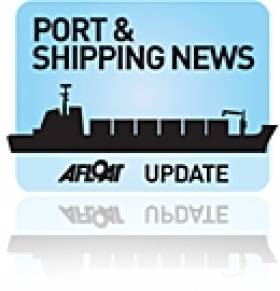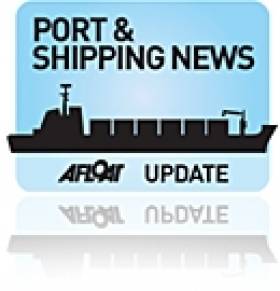Displaying items by tag: Londonderry Port Harbour Commissioners
Foyle Port Shipping Increase Rise by 27%
#FoylePort – Londonderry Port and Harbour Commissioners have announced that shipping through the port increased by 27% over the past year leading to before tax profits of over £1.2m.
Chairman of Londonderry Port and Harbour Commissioner Mr Garvan O'Doherty announced an excellent set of results for the year 2012 – 13 at the harbour commissioners recent annual general meeting.
Mr O'Doherty described the past year as a momentous one for the Port. "I was particularly proud of our role in the Clipper and Return of Colmcille events in the summer of 2012 and 2013. The development of marina infrastructure in the city centre – on time and on budget – provided a platform for the Clipper event which will live long in the memory of our citizens.
He added "Through Clipper and The Return of Colmcille, we worked alongside the key stakeholders in the city, and demonstrated that tapping into the potential of the Foyle helps to showcase the best this city has to offer."
"Over this period, the port's profile has been further enhanced by our sponsorship and support of City of Culture events such as the Return of Colmcille pageant – for which we provided technical marine support – and Fleadh Cheoil na hÉireann, which transfixed huge crowds here this summer. These events have greatly cemented the Port's reputation and we have also been proud to play a role in developing the marine aspects of what is now a formidable infrastructure for future tourism and economic development."
The recent announcement of £80 million of inward investment by Evermore Renewable Energy into the Port's land bank marks a major step forward for the Commissioners and the North West region, added Mr O'Doherty. "The location of the project at our Foyle Port facility is a major endorsement of the Port's ability to deliver large scale projects for the Region. It is also a validation of the Commissioners' decision, some years ago, to invest heavily in Port fixed assets and broaden its range of activities."
Outlining the annual results in greater details, Port Chief Executive Brian McGrath said the accounts contained in this annual report "reflect on ever improving operational performance with turnover of £6,412,615 with profit on ordinary activities before taxation of £1,225,218. This represents a significant increase in turnover driven by a 27% increase in tonnage handled. We are particularly grateful to all our customers and staff for their ongoing support."
"This is the last report which will be presented under the current Chairman's leadership. On behalf of the Commissioners we wish to publicly thank Garvan for his dynamic leadership and passion for the work of the Port and Harbour.
His fifteen years' service as Commissioner, Deputy Chairman and Chairman marks a distinguished career in Public Service and he leaves a strong legacy for the future."
Dredgers Continue Work on New Scottish Ferryport Terminal
The £200m development by Stena Line of the new Scottish ferryport will eventually see ferry services relocate from Stranrear to Old House Point. The current Stena Line service between Stranrear-Belfast is in competiton with P&O (Irish Sea)'s Cairnryan-Larne route.
The dredgers 'Argos' and 'Lough Foyle' operated by Londonderry Port Harbour Commissioners (LPHC) began the contract with PP McWilliams in March last year and are due to finish the dredging work by the end of this year. The project has created up to 900 jobs and the move of ports is to safeguard 500 seafaring employees when the terminal is due for completion in 2011.






























































